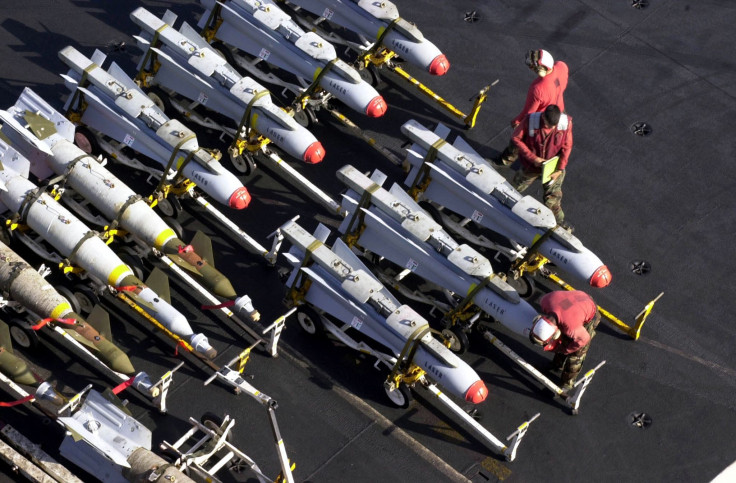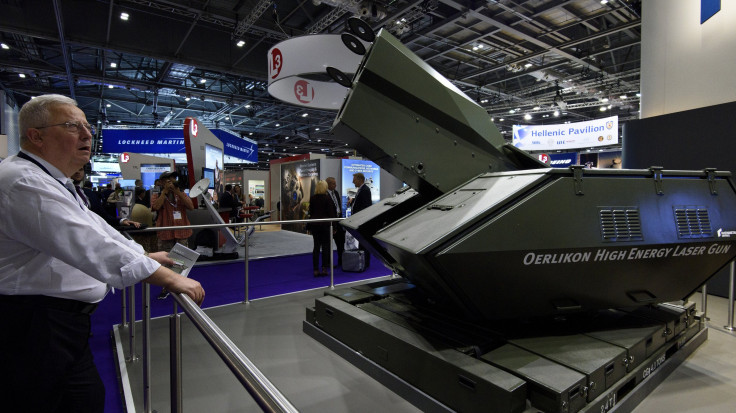Chinese Military Developing Portable Lasers? Enemy Missiles, Satellites Could Be Disabled By Sophisticated Device

The Chinese military could soon have the ability to disable heat-seeking sensors on enemy missiles or satellites using breakthrough portable-laser technology. The laser generator, which produces a high-frequency beam rendering infrared missiles useless, is typically massive in size and found on warships. But a research team in Beijing at the Chinese Academy of Sciences’ Institute of Physics said it has reduced the sophisticated device down to a single piece of crystal, according to South China Morning Post.
"This is a groundbreaking achievement," Liu Qiang, a professor of laser optics at Beijing’s Tsinghua University, told the Hong Kong newspaper. "Nobody has generated a laser at such a high frequency on a single piece of crystal before.”
In other words, the researchers, led by Professor Li Zhiyuan, could shrink the laser generator down to the size of a suitcase and mount it on aircraft, tanks or even soldiers. The ultrafast mechanism can not only damage enemy targets but apparently can pick up encrypted communications and detect stealth aircraft, as well. Zhiyuan’s research “hints at a very promising means for greatly expanding the power” of laser technology, his team was quoted as saying in a paper published in the latest issue of the journal Physical Review Letters.

China is one of many countries racing to advance its laser technology for military applications. American aerospace giant Boeing in August unveiled its Compact Laser Weapons System, a portable device capable of producing an invisible beam of energy that can destroy enemy targets several hundred yards away, UPI reported. Last year, the U.S. Navy deployed in the Persian Gulf its new ship-mounted infrared laser weapon, which officials said is capable of shooting down drones and disabling other ships, according to Defense One.
The Russian military was considering bringing back tanks equipped with lasers after more than two decades and a generation of technology development, the Kremlin newspaper Rossiyskaya Gazeta reported this year. The report came out after Russian media for months lauded the anticipated capabilities of the Armata T-14 tank, the Kremlin’s new high-tech war machine.
© Copyright IBTimes 2025. All rights reserved.





















